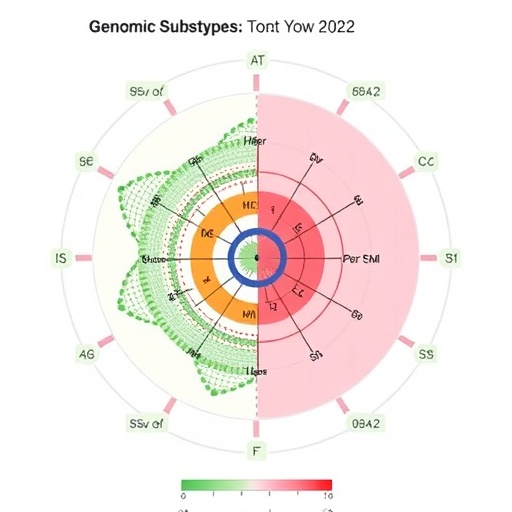WASHINGON, D.C. — The American Association for the Advancement of Science (AAAS) will release a new report Connecting Scientists to Policy Around the World: Landscape Analysis of Mechanisms Around the World Engaging Scientists and Engineers in Policy, that documents best practices for immersive science-policy connection mechanisms. A session on the report will be held at the AAAS Annual Meeting in Boston, MA, from 10:30 a.m. to noon on Thursday, February 16, at the Sheraton Boston Hotel, in Constitution Ballroom B (see program and list of speakers at end of this release).
AAAS conducted the landscape analysis in response to growing interest in establishing programs modeled on its successful Science & Technology Policy Fellowships. Sponsored by the Gordon and Betty Moore Foundation, the project affirmed global demand to strengthen connections between science and policy, highlighted factors for productive engagement of scientists in the policy sphere, identified more than 150 science-policy linkage mechanisms, and clarified criteria to support their success.
The need to engage and nurture a new generation of scientists globally to meet current and future demand at the science-policy interface emerged as a primary focal point. The report recommends critical actions to cultivate and network boundary-spanning STEM (science, technology, engineering, mathematics) leaders and support them to engage successfully at the intersection of science and policy around the world, including:
- Foster an ethos of civic engagement internationally by training STEM students on the ability and responsibility of science to help meet the needs of countries and citizens around the world.
- Broaden the diversity of scientists and engineers engaging at the science-policy interface by expanding opportunities for and recruiting participants from underserved populations and geographic regions, as well as from a variety of disciplines, backgrounds, cultural perspectives, genders, and career stages.
- Establish general core competencies and outline sets of skills that empower boundary-spanning expertise in the S&T policy arena to support shared understanding and aims across different political and cultural environments.
- Foster incentive structures within academia that reward science-policy engagement, outreach, mentoring, and other avenues of service to society.
- Strengthen science diplomacy and advance regional and global cooperation on science and technology policy by cultivating connections among national, regional, and international science and policy stakeholders.
"Successful boundary spanning is all about cultivating relationships, establishing connections, and developing collaborations to address complex problems," says Cynthia Robinson, senior policy advisor at AAAS, and former director of the Science & Technology Policy Fellowships. "Finding solutions to tough challenges won't happen by simply ensuring scientific information is available. It requires scientists actually engaging in problem-solving policy processes, and participating to implement solutions."
Since 1973, the AAAS S&T Policy Fellowships program has trained more than 3,000 scientists and engineers to successfully support evidence-based policymaking at the federal level through its model of embedding participants in government offices and the policymaking processes. The majority of STPF alumni continue in careers that build bridges between science and policy. Ten programs have been launched modeled on STPF, operating in the U.S. at the national and state levels, internationally in the ASEAN region, and in Canada, Israel, and Switzerland. New programs are planned for Argentina and Spain.
"We are now seeing a new generation of young scientists around the world eager to contribute their science to policy and diplomacy," notes Marga Gual Soler, project director in the AAAS Center for Science Diplomacy. "This report will serve as a guide for the scientific and policy communities to establish new science policy immersion programs and strengthen existing linkages between scientists and policymakers at all levels."
International collaboration to build science policy capacity is an emerging dimension of science diplomacy. The landscape analysis identified programs operating at binational and regional levels that present effective approaches for establishing relationships between countries as well as connecting the scientific and policy communities. This is especially important for addressing challenges that are transboundary in nature.
"This report captures what currently exists. The next step is to build on what we know and have learned from existing programs to develop new mechanisms that address the specific unmet needs of individual countries or regions," says Tom Wang, chief international officer of AAAS, and director of the Center for Science Diplomacy.
The report concludes with recommendations to foster a global network of boundary-spanning scientists empowered to share knowledge, collaborate, and expand their impact to address global challenges that no nation can solve alone.
###
Following is the program for the report release event.
Thursday, February 16, 2017
10:30am Opening remarks
Cynthia R. Robinson, Senior Policy Advisor, Center of Science, Policy and Society Programs; Principal Investigator, Science & Technology Policy Fellowships, AAAS
Tom C. Wang, Chief International Officer; Director, Center for Science Diplomacy, AAAS
10:40am Presentation of the "Connecting Scientists to Policy Around the World" report
Marga Gual Soler, Project Director, Center for Science Diplomacy, AAAS
11:00am Panel: Experiences and examples of mechanisms for science policy engagement
Frances Colón, Member of the External Advisory Committee, Immediate
Past Deputy Science and Technology Adviser to the U.S. Secretary of State
Rachael Maxwell, Lead, Canadian Science Policy Fellowship
Atsushi Sunami, Member of the External Advisory Committee, Vice-
President and Professor, National Graduate Institute for Policy Studies
(GRIPS), Japan
Agustin Campero, Secretary for Scientific and Technological Articulation,
Ministry of Science, Technology and Productive Innovation, Argentina
11:40 Audience Q&A
11:50 Closing remarks: Importance of international cooperation in building science policy capacity
H.R.H. Princess Sumaya Bint El Hassan, President, Royal Scientific Society of Jordan
To download a copy of the full report and the executive summary please visit http://www.aaas.org/globalsciencepolicy. For more information email: [email protected].
AAAS
###
Media Contact
Cynthia Robinson
[email protected]
@AAAS
http://www.aaas.org
############
Story Source: Materials provided by Scienmag




